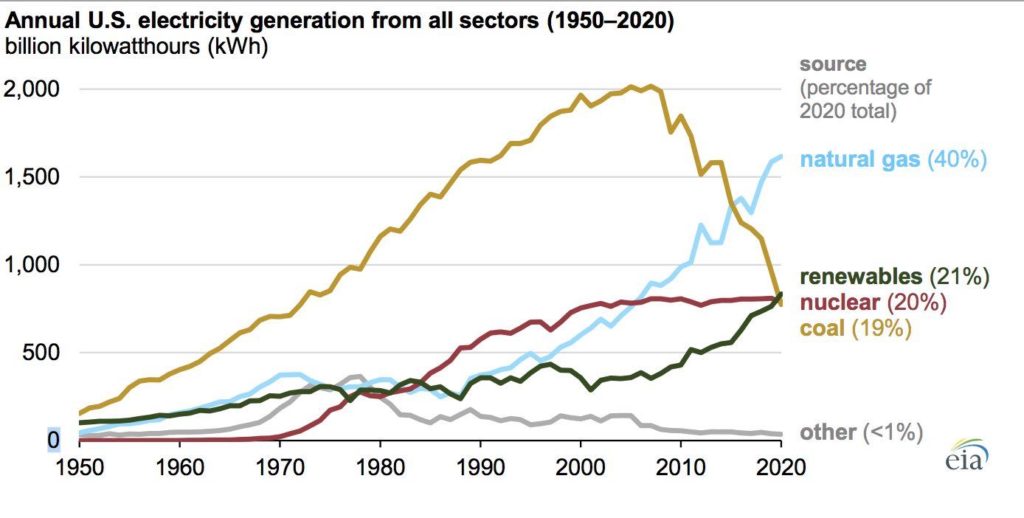The combination of all renewable energy sources in the United States generated the second largest share of electricity generation in 2020, behind natural gas, a new record for the renewable sector at the same time as coal generation continued its multi-year plunge.
The US Energy Information Administration (EIA) published new figures on Wednesday as part of it’s ‘Today in Energy’ series, revealing that renewable energy sources generated a record 834 billion kilowatt-hours (kWh) in 2020, or about 21% of the country’s total generated electricity.
The renewable energy sector in the United States consists of wind, hydroelectricity, solar, biomass, and geothermal sources, and includes both utility-scale and small-scale solar.
This was the first time that renewables outcompeted both nuclear and coal, which fell to third and fourth respectively.
Importantly for the US renewable energy sector, the EIA concluded that the renewable sector’s success “in 2020 was due mostly to significantly less coal use in U.S. electricity generation and steadily increased use of wind and solar.”
According to the EIA, electricity generation from across the United States’ coal sectors plummeted 20% compared to 774 billion kWh – a long way from the industry’s peak of 2,016 billion kWh back in 2007.
Since then, the sector has seen a dramatic decline, as is starkly demonstrated below.

Even as the coal industry saw its relevance plunge off a cliff, coal nevertheless remained the dominant source of electricity in the United States until 2016, at which point the natural gas sector ascended to its own growing dominance.
Unfortunately, due to rising natural gas prices, the EIA expects US coal-fired electricity generation to increase during 2021. Still, it expects generation from US renewables to increase by 7% in 2021 and increase again by 10% in 2022.









